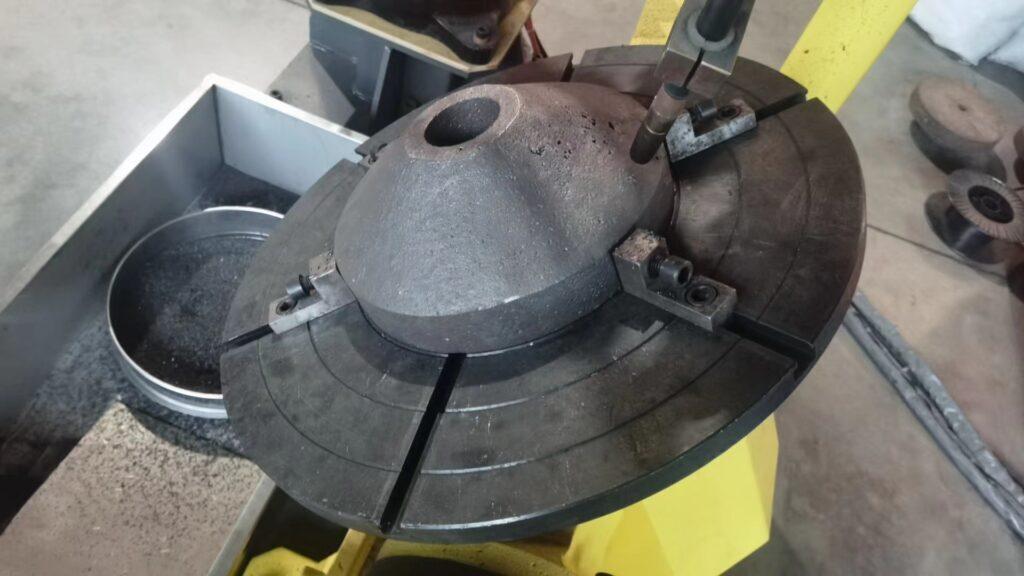01 Product category
Cemented carbide is an alloy material made from hard compounds of refractory metals and bonding metals through a powder metallurgy process. It is made of carbides (tungsten carbide-WC, titanium carbide-TiC) of high-hardness refractory metals. Grade powder as the main component, with cobalt (Co), nickel (Ni), and molybdenum (Mo) as binders, and sintered in a vacuum furnace or hydrogen reduction furnace. Powder metallurgy products have high hardness, wear resistance, and strength. And a series of excellent properties such as good toughness, heat resistance and corrosion resistance. In particular, its high hardness and wear resistance remain basically unchanged even at a temperature of 500°C, and it still has a high hardness at 1000°C.
Cemented carbide is widely used in military industry, aerospace, machining, metallurgy, oil drilling, mining tools, electronic communications, construction and other fields. With the development of downstream industries, the market demand for cemented carbide continues to increase. In addition, in the future, the manufacturing of high-tech weapons and equipment, the advancement of cutting-edge science and technology, and the rapid development of nuclear energy will greatly increase the demand for cemented carbide products with high technical content, high quality and stability. Carbide can also be used to make rock drilling tools, mining tools, drilling tools, measuring tools, wear-resistant parts, metal grinding tools, cylinder linings, precision bearings, nozzles, hardware molds (such as wire drawing dies, bolt molds, nut molds, and Various fastener molds, the excellent properties of carbide have gradually replaced the previous steel molds).
The upstream of the cemented carbide industry chain is the mining of tungsten, cobalt and other metal compounds and the smelting of tungsten carbide powder, cobalt powder and other powders. After tungsten concentrate enters the smelting process, from ammonium paratungstate (APT) to tungsten powder, tungsten carbide, and finally cemented carbide, the capacity utilization rate of each link gradually increases, and the upstream smelting link has obvious excess capacity. Among them, the capacity utilization rate of ammonium paratungstate is only 52.5 %.

Tungsten is an important component of cemented carbide raw materials. More than 80% of tungsten is used in the synthesis process of cemented carbide. China is the country with the richest tungsten resource reserves in the world. According to USGS data, the world's tungsten ore reserves were approximately 3.2 million tons in 2019, of which China's tungsten ore reserves were 1.9 million tons, accounting for nearly 60%; from 2010 to 2021, China's tungsten concentrate production accounted for more than 80% of global production. . There are many domestic tungsten carbide manufacturers, such as Xiamen Tungsten Industry, Chinatungsten High-tech, Jiangxi Tungsten Industry, Guangdong Xianglu Tungsten Industry, Ganzhou Zhangyuan Tungsten Industry, etc. are all large-scale manufacturers that produce tungsten carbide, and the supply is very sufficient. Since 2010 Since then, the average annual net export volume has reached 3,720 tons.
02 Industry scale and competition landscape
Global cemented carbide production in 2021 will be approximately 104,000 tons. China is the country with the largest cemented carbide production in the world. According to statistics from the China Tungsten Industry Association, China's cemented carbide production capacity was 55,000 tons in 2020, and its output was 41,000 tons, accounting for approximately 40% of global production; output in 2021 It is 52,000 tons, accounting for about 50% of the world, as shown in the figure below. In 2021, the total operating revenue of my country's cemented carbide companies will be 34.6 billion yuan. In the first half of 2022, enterprises in the national cemented carbide industry produced a total of 23,000 tons of cemented carbide, a year-on-year increase of 0.2%; the main business income was 18.753 billion yuan, a year-on-year increase of 17.52%; the profit was 1.648 billion yuan, a year-on-year increase of 22.37%.
From the product structure, among the various types of cemented carbide production in my country in 2019, cutting tool alloy production accounted for 45%, mining tool alloy production accounted for 25%, wear-resistant tool alloy production accounted for 27%, and other cemented carbide production Accounting for 3%.
There are currently about 600-700 cemented carbide manufacturers in the world (excluding small and medium-sized enterprises below China's scale). my country's key enterprises are mainly located in areas rich in tungsten mineral resources, such as Hunan (Zhuzhou), Jiangxi (Ganzhou), Fujian (Longyan) and other places. They have produced China Tungsten High-tech, Xiamen Tungsten Industry (Xiamen Jinlu), Ganzhou Zhangyuan Domestic leading cemented carbide companies represented by Tungsten Industry have formed a high degree of industry concentration. In 2019, the output of my country's top ten cemented carbide manufacturers accounted for 59.02% of the country's total output. Chinatungsten High-tech and Xiamen Tungsten Industry are the first-tier enterprises. Other key enterprises include Guangdong Xianglu Tungsten Industry (A shares, Chaozhou) , Zhangyuan Tungsten Industry (A shares, Ganzhou), Suzhou Xinrui Alloy (A shares), Zhuzhou Oukeyi (A shares), Zhejiang Dewei Carbide (Wenzhou), Kunshan Changying Hard (IPO application pending), Penglai Superhard (Yantai), Jinan Institute of Metallurgical Sciences, Heyuan Fuma (New Third Board), Sichuan Kelite (New Third Board), etc.
The demand areas of the cemented carbide market, such as new energy vehicles, electronic information and communications, ships, artificial intelligence, aerospace, CNC machine tools, new energy, metal molds, infrastructure construction, etc., are still growing rapidly. Since 2022, due to the impact of changes in the international situation such as the intensification of regional conflicts, the EU countries, which are important areas for global cemented carbide production and consumption, have seen their cemented carbide production power costs and labor costs rise significantly due to the skyrocketing energy prices. China It will be an important place for the transfer of its cemented carbide industry.





